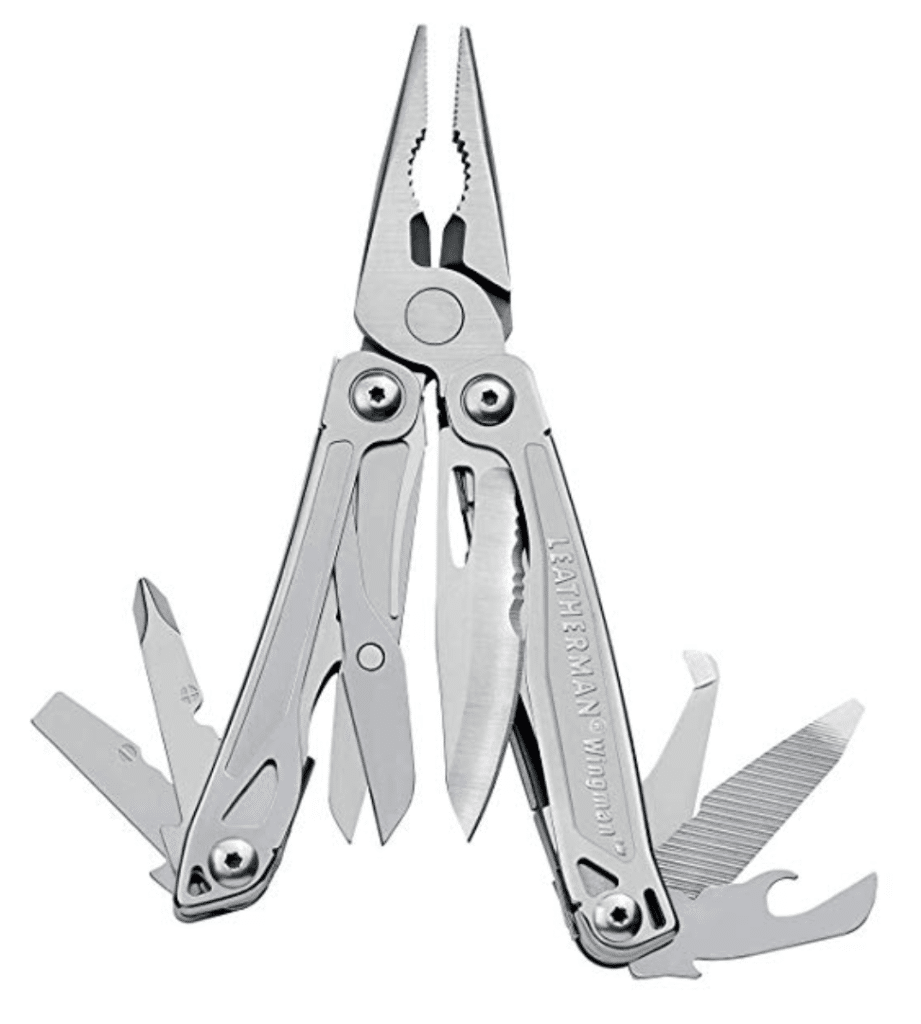There are some who are saying that the GFX 100 is trying to be all things to all (medium format) photographers, and suffers for it. That resonates with me. I felt the same way about the D850. The D850 turned out to be a highly popular camera, and has probably made Nikon a bundle of money, so Nikon’s approach was probably the right one from a business perspective.
I have a philosophy about camera feature sets. It’s akin to my thoughts about tools. I don’t like the Swiss Army knife approach to tool building. Give me a tool that performs a narrow function superbly, and I’m a happy camper. Put a Leatherman multitool in my hand and, while it may do the job in a pinch, it doesn’t satisfy me.
From Fujifilm’s packaging the GFX 50 innards in two strikingly different ways – the differences are especially noticeable when you’re switching back and forth between them – I had thought that they bought into my approach. But from the GFX 100 design, I can see I was wrong.
I’m going to use the GFX 100 on a solid support – either some heavy RRS or Gitzo legs or a Foba camera stand – almost all the time. IBIS is not going to be useful to me in those situations. I suspect that the inclusion of IBIS compromised the camera from the standpoint of both weight and size. I suspect that the camera wouldn’t have needed the “front porch” without IBIS, and that protuberance means that you can’t use even “normal” focal length lenses on the Cambo Actus*. IBIS also consumes power and impedes the conduction of heat away from the sensor.
For my usage of the camera, I don’t need or want phase-detection autofocus (PDAF). The presence of on-sensor PDAF (OSPDAF) in both the Nikon Zx and Sony a7x/a9 cameras has led to image imperfections. Bill Claff has seen indications of something similar in the GFX 100.
I also don’t need a high frame rate, the inclusion of which may have affected the size and weight of the camera.
I’m not saying that IBIS, PDAF, and fast continuous frame rates aren’t in general good things. In many situations, they are de rigueuer. And I’m not saying their presence is going to keep me from buying and using the GFX 100. After complaining about the D850’s feature set, I bought one, and used it happily until the Z7 came along, at which point I dropped it like a hot rock.
It would be nice if Fuji built a few different 100 MP 33×44 mm cameras. But, given the volumes that medium format cameras usually attain, for the foreseeable future I think I’m going to be using the Swiss Army knife.


Hi Jim,
I can see your point. But, Sony makes some of the decisions. I don’t know if Sony makes the 100 MP sensor without PDAF pixels. Yes, I know they are just the topping…
The same applies to 6 FPS, it is not needed but that it was Sony offers.
I would think that the 100 MP sensor in the GFX 50S body may make some sense.
I would agree that I could live without IBIS, too. On the other hand, sometimes you can’t rig your tripod and than IBIS may come handy.
Best regards
Erik
> I don’t know if Sony makes the 100 MP sensor without PDAF pixels.
Sony Semi will make whatever you pay for …
The OSPDAF pixels are in the topping. The sensor needs to support them in order for OSPDAF to work, but if they are replaced with a normal Bayer CFA, there will be no image degradation from the reflections.
yes, and Sony Semi will make you what you pay for… that includes laying CFA on top of the silicone and microlenses on top of CFA layer
Right. Except it’s silicon, not silicone.
> The same applies to 6 FPS, it is not needed but that it was Sony offers.
and that simply is what camera maker does… nobody forces Fuji to __use__ the full readout speed that sensor is __capable__ of all the time.
I saw somewhere that Fuji claimed you’ll want to use IBIS even when the camera’s on a tripod. I know you’ve tested that with other cameras; it might be worth testing again with the GFX 100.
I will test that. I’ve never seen IBIS make things better when the camera is on a tripod unless there’s an external source of vibration.
May me Fuji meant different class of tripods (in termps of vibration prone-ness) … or they meant when you are shooting moving target from tripod/monopod with an appropriate head by panning horizontally ?
True, there are tripods and then there are tripods. Probably not about panning, I’d guess.
My testing on the Fuji X-H1 showed no degradation of image quality for leaving IBIS on while mounted on a tripod. After inducing vibrations between 5-15 hz, IBIS helped tremendously but didn’t perfectly correct for the motion. With IBIS on, I was observing 0.2 cycles per pixel with no vibration and 0.14 with vibration.
it looks like Jim wants to switch to H when (__if__) they come up with 100mp… no IBIS, no PDAF, no FPS 🙂
Count me as someone who has felt well served by my D850, and who has now chosen to switch to the GFX 100 because of the similar level of versatility found in the design of this new camera body.
Specialty tools are a wonder—that is, for those who have the resources to buy them all, and the space to store them all for each specific need. However, not all of us have such resources at hand, even if we are determined to capture and use the highest level of image quality available.
If Fujifilm had taken out a major feature such as the IBIS to make the exterior more streamlined, or kept the focusing at the same lugubrious contrast detect pace. They wouldn’t have gotten my attention, or my money. Rather I suspect they have made enough simultaneous engineering leaps to create a medium-format sweet spot no one imagined could exist before now. I’m curious to see how the camera marketplace responds.
For lighter carrying I will hang onto my Z7 for now, but a speedier Mark II 50S or R might put me off Nikon altogether. Time will tell.
Out of curiously what features of the D850 would you prefer not to have?
I was hoping for a high-res studio camera. So, 60+ MP, no high frame rate, no advanced AF modes. The D5 is already optimized for action, and I can do that better with the D5 than with the D850.
https://blog.kasson.com/a7riii/nikon-d850-sony-a7riii-design-goals/
Even in the studio CDAF can be very annoying and slow to use especially if the subject is alive and can move. PDAF helps the majority of photographers.
The D850 gives higher quality images than the D5 in many circumstances. Action doesn’t mean that image quality doesn’t matter. Often the subject isn’t at the exact distance required to fill the frame and in action photography it is often wise to leave a margin around the subject on purpose. Furthermore, some action takes place in bright, contrasty, dappled light and the D850’s dynamic range can be helpful in producing an acceptable outcome in such difficult light. Finally, the D850’s ability to use EFCS in Qc mode gives much better sharpness when hand holding lightweight teles such as the PF lenses as long as high speed is not required at the same time. Often landscape can turn into an action scene as the subjects spring into action. Switching to a different camera is slower than just turning the shutter speed dial from 1/200s to 1/1250s and letting auto ISO take care of the exposure.
I think the D850 is popular because it is seen as valuable due to the combination of quality and speed. The Fuji 100MP model is likely going to be popular despite its high price, as many photographers have the simultaneous need for these characteristics.
I just saw that they expect to add pixel shift in a not-to-distant firmware update.
A pretty remarkable camera.